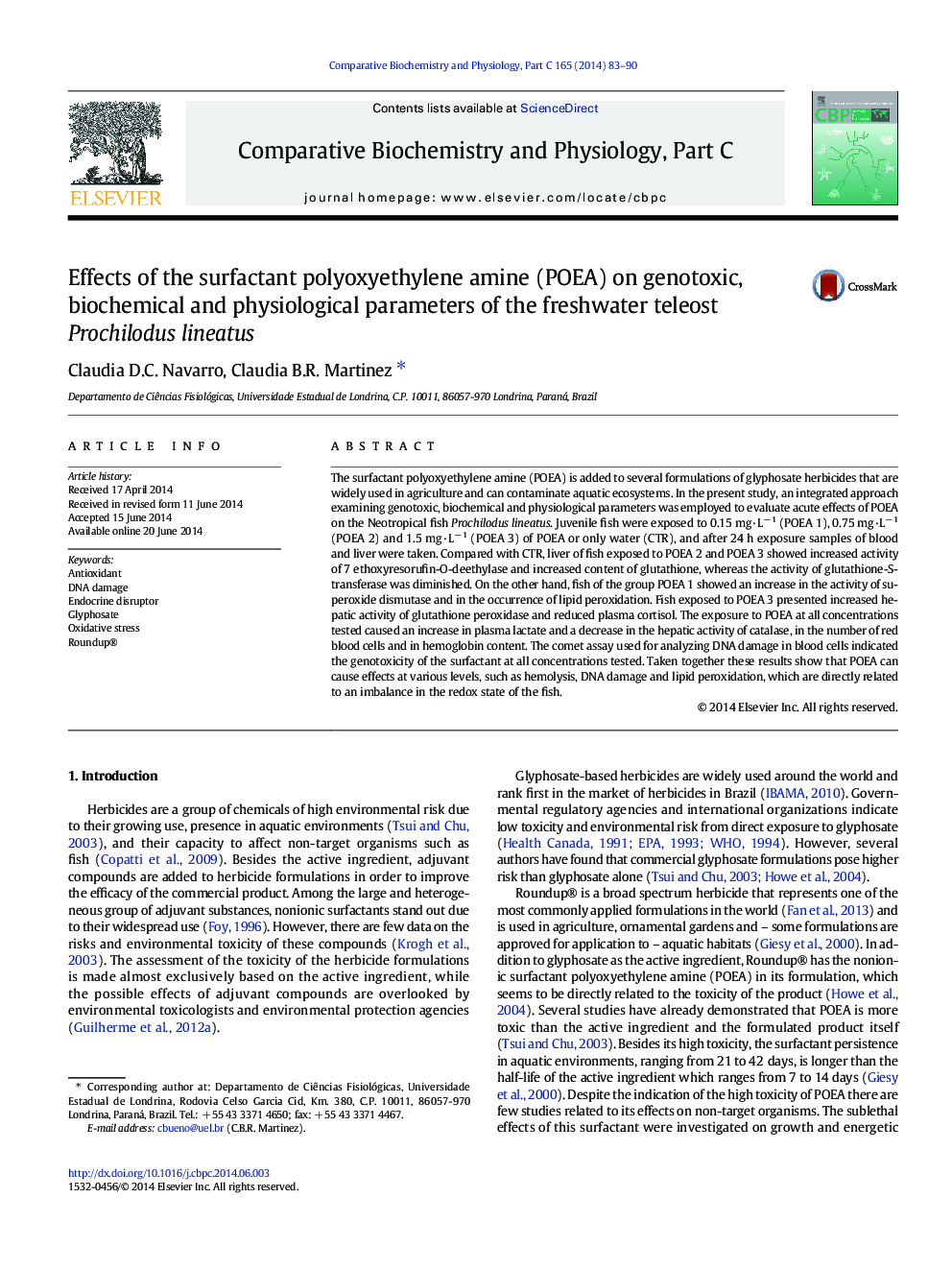| Article ID | Journal | Published Year | Pages | File Type |
|---|---|---|---|---|
| 8319150 | Comparative Biochemistry and Physiology Part C: Toxicology & Pharmacology | 2014 | 8 Pages |
Abstract
The surfactant polyoxyethylene amine (POEA) is added to several formulations of glyphosate herbicides that are widely used in agriculture and can contaminate aquatic ecosystems. In the present study, an integrated approach examining genotoxic, biochemical and physiological parameters was employed to evaluate acute effects of POEA on the Neotropical fish Prochilodus lineatus. Juvenile fish were exposed to 0.15 mg·Lâ 1 (POEA 1), 0.75 mg·Lâ 1 (POEA 2) and 1.5 mg·Lâ 1 (POEA 3) of POEA or only water (CTR), and after 24 h exposure samples of blood and liver were taken. Compared with CTR, liver of fish exposed to POEA 2 and POEA 3 showed increased activity of 7 ethoxyresorufin-O-deethylase and increased content of glutathione, whereas the activity of glutathione-S-transferase was diminished. On the other hand, fish of the group POEA 1 showed an increase in the activity of superoxide dismutase and in the occurrence of lipid peroxidation. Fish exposed to POEA 3 presented increased hepatic activity of glutathione peroxidase and reduced plasma cortisol. The exposure to POEA at all concentrations tested caused an increase in plasma lactate and a decrease in the hepatic activity of catalase, in the number of red blood cells and in hemoglobin content. The comet assay used for analyzing DNA damage in blood cells indicated the genotoxicity of the surfactant at all concentrations tested. Taken together these results show that POEA can cause effects at various levels, such as hemolysis, DNA damage and lipid peroxidation, which are directly related to an imbalance in the redox state of the fish.
Related Topics
Life Sciences
Biochemistry, Genetics and Molecular Biology
Biochemistry
Authors
Claudia D.C. Navarro, Claudia B.R. Martinez,
